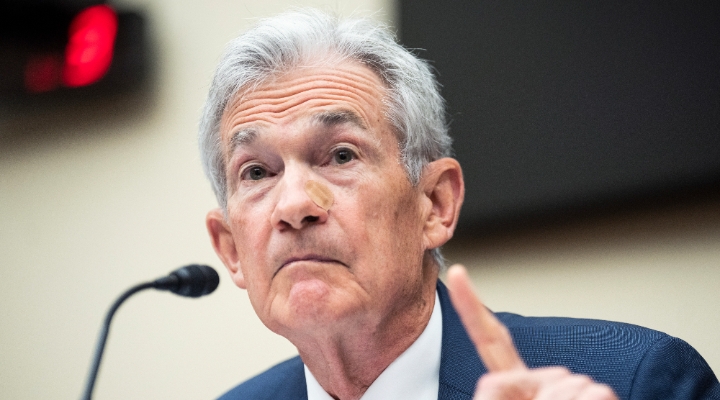Christine Benz: Hi, I'm Christine Benz for Morningstar.com. Which factors should you focus on to help select strong-performing mutual funds? Joining me to discuss that topic is Russ Kinnel. He is director of manager research for Morningstar.
Russ, thank you so much for being here.
Russ Kinnel: Glad to be here.
Benz: Russ, in Morningstar FundInvestor every year you've been compiling this list of funds based on some specific criteria--the basic goal there is to identify funds that you think will perform well into the future. So, let's start with the criteria that you layer on to arrive at this list of funds.
Kinnel: Yeah, just a few simple tests. I look for funds that have an Analyst Rating of Bronze or better, fees in the cheapest quintile, a Parent grade of Positive, returns over the manager's tenure above the benchmark, volatility is not high--it can be anything below that, it can be above average, but not high. Those are really the key tests that we are looking at.
Benz: So, in this most recent issue of FundInvestor, you examined the performance of these funds on a year-by-year basis. So, you've been doing this since 2012, and you look forward with each list just to see how they would have performed over the subsequent time period. Can you summarize the results?
Kinnel: Sure. I'll throw out the caveat that past performance is no guarantee of future results. So, no promises here. But yeah, I'm pleased with the results. So, at a minimum, each year's list had two thirds or better outperformed their peer group and in four out of six years a majority of the funds outperformed their benchmark. And even the two when it didn't outperform, it was around 45% that outperformed. So, I feel really good about those results.
Benz: OK. So, quickly outline the difference between category peers and benchmark. What's the difference?
Kinnel: That's right. So, if you're looking at a large-growth fund, then we are saying, for category peers did it beat the median large-growth fund. If you're looking at benchmark, then it would be the Russell 1000 Growth. So, of course, the category peers is going to be after costs and the benchmark is not. So, nine times out of 10, the benchmark is the higher hurdle and, of course, that was reflected in these results, too.
Benz: OK. So, when you look at the performance and when you look at the funds that performed particularly well, can you talk about commonalities among them and maybe highlight some of the better-performing funds that made the list year after year?
Kinnel: Yeah. You saw a lot of the same fund companies and the same funds pass the test every year or nearly every year and go on to produce really good results. So, you will see very high representation for American Funds, Vanguard, Dodge & Cox, Primecap, T. Rowe Price. These are all really well-run firms, really good stewards, but also they run at pretty low costs, too. So, they have a lot of good qualities.
Benz: OK. And then the list of funds that underperformed after appearing on the Fantastic--Whatever-Number--List. Let's talk about some of those. Did you identify any issues that you think were, sort of, recurrent themes among those that underperformed their category peers or their benchmarks or both?
Kinnel: Yeah. When you looked at the ones that were the worst of the performers, I think you saw quirky portfolios that then worked against them. So, for instance, Janus Henderson Overseas had some really aggressive bets that worked against it. FPA Capital had a sort of energy and cash position that worked for a while and then worked against it. So, I think a little quirkier, I think a little smaller firms where you also had manager changes. A lot of the successful stories were ones where you had a team-manage like American Funds or Dodge & Cox where you had a bunch of people. So, obviously, one manager change wouldn't be a big departure either in strategy or quality of management.
Benz: OK. So, people can go to FundInvestor to see the list of funds that made the cut for 2019, and they can also digest some of these results that we've just talked about. But for people who are embarking on fund selection on their own, what are some takeaways from this research that you think people can implement into their own fund-selection process?
Kinnel: Yeah. I think the fact that there are over 8,000 funds out there means you can really have a high bar. So, you can really let the screens do a lot of work. You can say, I want this and that. And I think it's important to note that my performance test was: The manager has to have been in there for five years or longer and outperformed over their entire tenure. Where people can get into trouble is by using those screening tools to look for good recent performers because that takes you in the wrong direction.
So, really focus on those fundamentals. And you can have a very high bar and it's going to get you down to a much more manageable list. If you are investing on your own, it can be pretty intimidating. So many funds, so many stocks out there. But all of a sudden, you get down to--it's often Fantastic 40-something. So, a pretty small number of funds and that really will help you to focus but also, as we said, a lot of these funds are there year after year because those strong qualities remain, and I think it can really help you to just go to a good list of funds. It's something that you can do a pretty close approximation using the Morningstar.com screeners and some other screeners out there.
Benz: OK, Russ, interesting research. Thank you so much for being here to discuss it with us.
Kinnel: You're welcome.
Benz: Thanks for watching. I'm Christine Benz for Morningstar.com.









:quality(80)/cloudfront-us-east-1.images.arcpublishing.com/morningstar/VUWQI723Q5E43P5QRTRHGLJ7TI.png)











